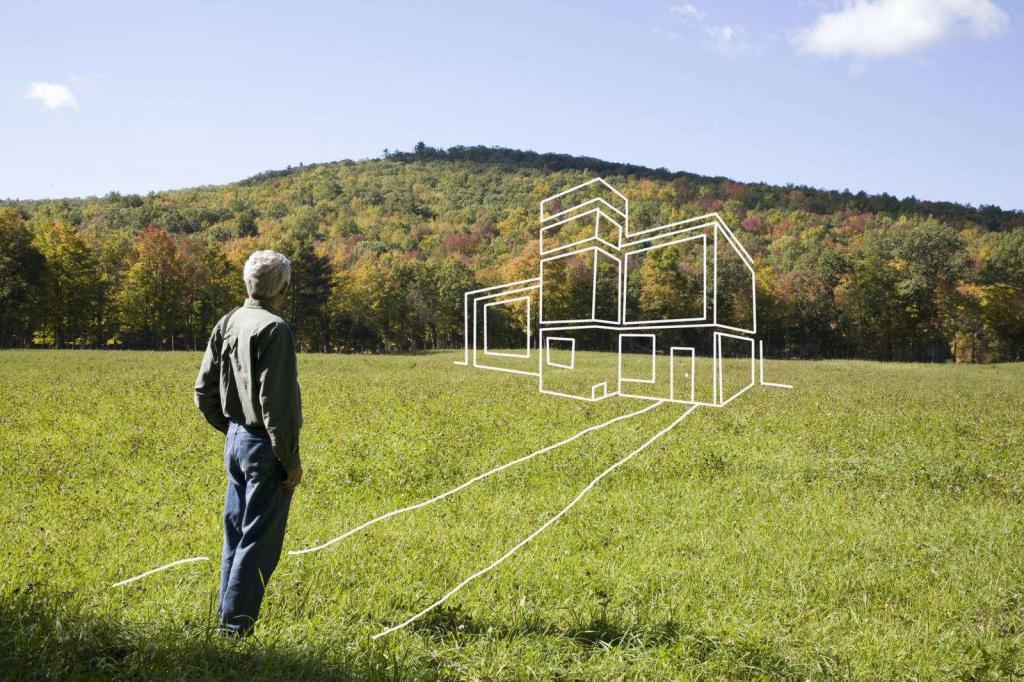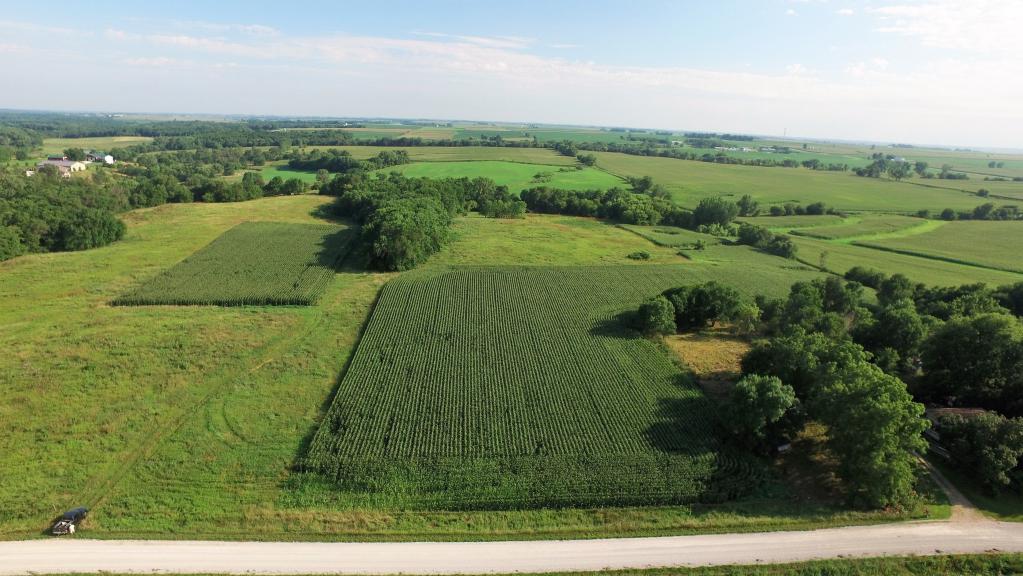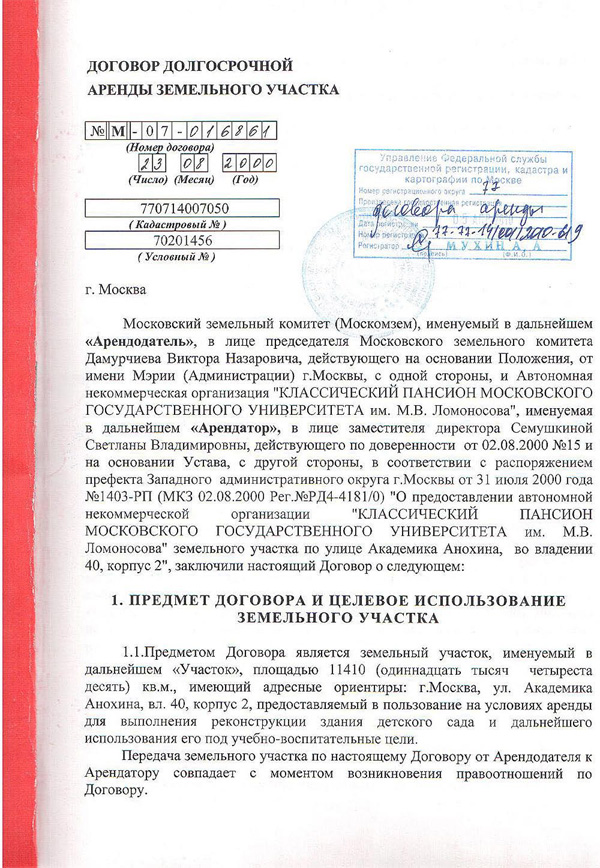Many entrepreneurs or individuals want to use a particular plot of land for different purposes. Available funds are not always available to acquire territory. An excellent solution is a long-term lease of land from the state. For registration, you can use different ways, and in the future there will be an opportunity to get the territory into ownership. At the same time, you can use the plots only for specific purposes specified in advance in the contract. Violation of the terms of the contract will be the basis for its termination before the expiration date.
Land lease concept
Land rental is offered by the state to many citizens. It is drawn up by forming a special contract. Only suitable land is leased. Rent may be:
- long-term, on which land is provided for a period of 5 to 49 years, moreover, registration of the contract is certainly required, and in the future it is possible to buy out the territory
- unlimited, which is easily terminated at any time, but this requires notification of the other party three months in advance;
- short-term, for which the period of validity does not exceed 5 years.
The choice of rental period depends entirely on the purpose of the use of the territory.

Legislative regulation
Long-term lease of land is provided only subject to the terms and conditions prescribed by law. With this design, individuals or companies have the right to buy the land.
In Art. 39 of the LC indicate the terms of the lease and its duration. All plots that can be issued for long-term rent are registered.
Relations arising between the two parties to the agreement are governed by the information of Art. 27 ZK and Ch. 27-29 Civil Code.
An important condition on which a long-term lease of land from the state is provided is the need to use the territory strictly for its intended purpose. Decisions regarding the provision of land for rent are made by the municipal authorities of each region. All transactions are made on behalf of the state.
If the term of the contract exceeds 11 months, then it must be registered, and is recognized valid from the moment of registration, which is indicated in Art. 651 CC.
What is the size of the board?
Long-term lease of land is available for a fee, and its size is prescribed in the contract. This point is considered an important condition of the agreement.
Income received by regional authorities is tax deductible. Its size is regulated by the Government of the country; therefore, funds are transferred to the federal budget. The price is set during the auctions process, and if the land already has an assigned cadastral value, the initial rental price will exceed this indicator by 1.5%.

Who can become a tenant?
Long-term lease of land owned by the state is offered to both individuals and various companies.
If a private person claims to conclude such a contract, then you can use the territories for the management of a subsidiary farm or the construction of a residential building.
Commercial organizations can use long-term lease of municipal land for the construction of various objects used in the work process. Sites for agricultural activities or other purposes may also apply.
What plots cannot be rented out?
It is not allowed to draw up such an agreement with regard to land:
- buildings or land located in the locations of the military forces or facilities of the country;
- different nature reserves;
- the territory where various energy resources are located, which are atomic or radioactive;
- buildings designed to protect the borders of the country;
- places where prisons or other similar facilities are located intended for serving sentences by criminals;
- cemeteries or other territories with burials;
- administrative entities.
You can find out exactly what plots can be issued for rent directly in the local administration of a particular region.

For what purposes is the land leased?
Companies and individuals can take land for long-term lease for different purposes. Before directly submitting an application for registration of the territory, you should check what its purpose is, since you can use it only when taking these data into account.
Usually, such an agreement is drawn up with municipal authorities for the use of land for the following purposes:
- the construction of commercial or private facilities used for profit or accommodation;
- conducting business activities;
- conducting various engineering communications so that they can be connected to various objects;
- the use of the bowels of the earth;
- agricultural work;
- construction of roads or highways.
It is allowed for tenants to change the purpose of land use, but for this it is necessary to submit an appropriate application to the administration of the region. If the authorities are not notified that the sites are used for other purposes, then this may become the basis for early termination of the contract.
Deadlines
Long-term lease of land from the state can be for different periods of time. However, there are certain maximum and minimum time limits.

As much as possible you can draw up a contract for 49 years, and tenants do not always get approval for this period, as the regional authorities assess the state of the land market in the city, and also take into account the category of the plot.
Minimally, it is possible to arrange land for long-term rent for 5 years.
Most often, contracts are drawn up for a period of 3 to 10 years. In any case, the agreement is required to be registered with Rosreestr.
Under what conditions is land provided?
Long-term lease of land with the right of redemption is provided subject to the requirements:
- the territory should not be drawn up for another person;
- the presence on the earth of any ownerless objects;
- should not be on the site of common communication networks.
Each person or company applying to draw up such a contract with the municipal authorities must first decide on the purpose of applying the territory.
Rental Benefits
Long-term lease of land has many advantages for tenants. These include:
- necessary territories are provided for a long term, which can reach even 49 years;
- at the end of the term of this contract, it is possible to buy land;
- it is allowed to sublet the land, but it is important to notify the municipal authorities of such a decision, and such activity can become a source of good profit;
- it is permitted to terminate the contract ahead of schedule, if necessary;
- you can build different structures on the ground or make a profit through its use.

When drawing up a long-term land lease agreement, citizens or firms can be sure that the transaction is legally clean and legal. There is practically no opportunity to challenge the contract of sale if a decision is made on the redemption of real estate. If the land is in a long-term lease and a garage built on it is sold, then a lease agreement is drawn up for buyers who can then buy this territory.
The disadvantages include the fact that if the municipal authorities or state authorities need to use the territory, then it is easily seized by early termination of the contract. Also, not all citizens can take advantage of such an offer.
If you plan to use the site for individual housing construction, then it is provided for a maximum of 20 years.
Design Methods
How to arrange a long-term lease of land? There are several ways to do this:
- holding auctions initiated by the municipal authorities themselves, and information on the date of their implementation is distributed in advance to the media;
- direct contact of a potential tenant with local authorities in order to select the optimal site for specific purposes;
- conclusion of a contract without bidding, and this process is permitted exclusively in relation to allotments for which there is no information in the land cadastre.
Most often, municipal authorities use tenders, as they help to establish the high cost of rent.

Features of the auction
Long-term lease of uncultivated land is a transaction between the municipal authorities and the tenant. Different persons can act as a tenant, and usually tenders are held to select a rent payer.
The whole process is divided into stages:
- a decision is made by the municipal authorities on the provision of specific plots for rent to citizens or companies;
- information on the date and place of the auction is distributed in the media;
- potential tenants submit an application and other documents for participation;
- a deposit is made;
- on the appointed day, you must take part in the auction, which will make it possible to conclude a land lease.
Bidding is carried out only if there are two or more participants. All information about the results is recorded, after which a copy of the protocol is transmitted to the winner, as it will be needed to conclude a contract.

The nuances of drawing up an agreement
A long-term land lease agreement is an important document regulating relations between municipal authorities and tenants. It should contain all the conditions for the use of land for specific purposes.
Be sure to include information in this document:
- subject of the agreement submitted by the land;
- different restrictions on the intended use of the territory are taken into account;
- whether there is any burden on it;
- the term of the contract is prescribed;
- the amount of rent is calculated;
- there is a procedure on the basis of which it is allowed to make adjustments to the agreement or terminate it ahead of schedule;
- the liability of each party is prescribed if any violations of the terms of the contract are detected;
- There must be additional important points of cooperation;
- at the end, details of each party are indicated.
Particular attention is paid to the description of the land. If there are inaccuracies, then they can become the basis for invalidating such an agreement through a court. Reliable information must be available, with the help of which there should be no difficulties with the identification of a specific territory. This data includes the cadastral number of the site, its exact address, area and the presence of various constructed objects.

How is the rental amount determined?
The cost of renting land provided for a long period can be calculated in different ways:
- when taking into account the cadastral value of the object;
- based on the results of tenders at which each bidder can offer its price;
- based on rates adopted by the municipal authorities, for which the market price of similar objects is taken into account.
The initial price at the auction depends on the data available in the USRN, therefore, the cadastral or market price of the territory is taken into account as a basis. During the calculation, the zonal coefficient and corrections are additionally taken into account. The price also depends on the area of the leased land.

How to register for ownership?
Land tenants, in the presence of a long-term contract, can buy the land from the municipality in the future. A pre-emptive right of purchase appears when erecting a capital structure in the territory. The same right exists for citizens who use land for agricultural activities. You can exercise this right only three years after drawing up the lease.
If there are no buildings, then for redemption it will be necessary to participate in tendering on general terms.
To buy the land, you must contact the administration with a statement and other documents, which include a lease and a tenant’s passport. Upon receipt of approval, the property is registered in Rosreestr. If a refusal is received, it is recommended to inquire what is due to it.
If, unreasonably, a citizen or company is denied participation in tenders or redemption of land for which rental payments have been paid for more than three years, then you can contact a lawyer to assert your rights.
Long-term lease of different land plots is a popular procedure that allows citizens and firms to use certain territories belonging to the municipality for different purposes. You can issue such a lease only in some areas. They may only be used in accordance with their purpose and category. The municipal authorities establish a fee for the territory, which must be paid by tenants in a timely manner. It is allowed for long-term use of land in the future to redeem it.
